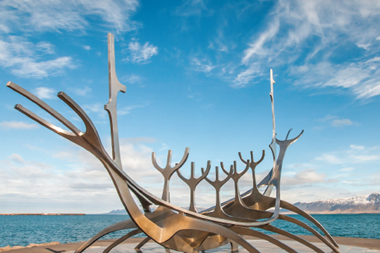The Central Bank of Iceland has revealed that the country’s pension funds used only 77% of the latest allowance it gave them to invest abroad, as parliament passed a landmark bill to start lifting the capital controls imposed after the 2008 crisis.
The bill amending the Foreign Exchange Act of 1992 centred on liberalising capital controls on individuals and firms and was passed on Tuesday by Iceland’s parliament (Althing) by all 47 members who were present, of the 63 members in total.
The legislation means people and companies are now allowed to invest up to ISK30m (€238,000) abroad before the end of this year, at which point the authorisation amount will rise to ISK100m.
From the end of this year, they will also be allowed to transfer deposit balances from accounts with domestic banks to accounts with foreign banks.
The bill does not change the situation for pension funds, however, which are being permitted through separate action to increase their foreign investment, which was effectively frozen in terms of its absolute size when capital controls were put in place eight years ago.
This action has taken the form of tranches of authorisation from the central bank for the funds to invest a certain overall amount – divided between the pension funds according to a varying formula – which have been granted in four stages between mid-2015 up to the latest allowance period, which ended on 30 September.
The first three allowances totalled ISK40bn, and the most recent allowance for the period between July and September amounted to another ISK40bn.
Figures released by the central bank this week show the pension funds only made use of ISK30.8bn of this, or 77% of the total authorisation.
This follows an 87% use of the previous combined amounts, totalling ISK40bn, or ISK34.7bn in absolute terms.
The figures suggest the allowances are placing little restriction on the pace at which Icelandic pension funds would like to move assets back into foreign markets – on an average level across pension funds, at least.
At the end of June, the pension funds’ foreign assets totalled ISK709bn, according to the central bank’s stability report published yesterday, equating to about 21.3% of total assets.
This was 0.8 percentage points lower than the end of last year and down by about 2.1 percentage points since the end of June 2015.
The Icelandic króna has appreciated strongly against a basket of currencies in 2016.
Pension funds in Iceland report that their ideal allocation to foreign assets is between 30% and 50%, but some are prepared to wait up to 10 years before they achieve this level of diversification to minimise the risk of the investment shift.
The central bank said in its stability report that, when the capital controls are liberalised, capital outflows can be expected because of an increase in firms’ foreign direct investment and to firms and individuals’ attempts to diversify risk in their asset portfolios.
It added: “A wide interest rate differential with abroad and largely favourable conditions in Iceland – together with sizeable foreign currency inflows due to services trade and the associated appreciation of the króna – reduces the risk of large-scale net outflows.”












No comments yet